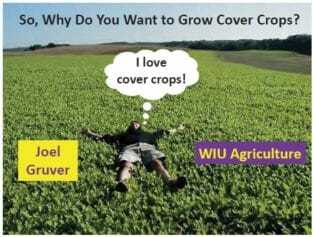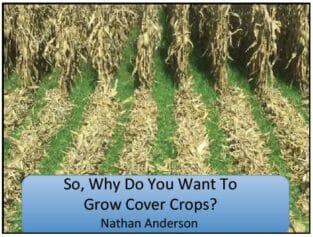So, why do you want to grow cover crops?
So, why do you want to grow cover crops? is a second webinar in the American Society of Agronomy series on cover crops focused on how to make sure farmers think about goals for cover crops before getting started. Length of the growing season affects the growth of cover crops after establishment, which affects the potential benefits that can be realistically expected from including cover crops into a production system. Presenters from the central and northern Corn Belt will address their goals for, and their experiences with, incorporating cover crops into their operations plus share information about decision-making tools they use to improve their success with cover crops. Information shared will be targeted to ag professionals who consult with farmers adding cover crops. Credits can still be earned just sign in through the ASA website.
Presenter background: Dr. Joel Gruver grew up on a small diversified farm in rural Maryland. He has a BS in Chemistry from Principia College, a MS in Agronomy from the University of Maryland and a PhD in Soil Science from NC State University. He is currently an Associate Professor of Soil Science and Sustainable Agriculture in the School of Agriculture at Western Illinois University. In addition to teaching 6 classes, Dr. Gruver conducts conservation cropping systems research and outreach with a focus on cover crops and organic grain production.
Nathan Anderson has been farming with his family since 2005, raising beef cattle and field crops near Cherokee, Iowa. The cow-calf herd is primarily grass-based, the crops are no-tilled, and they use cover crops both for the soil benefits and as forage for the livestock.
Cover crops in the Midwest Corn Belt may be used to accomplish several goals, including erosion control, limiting nutrient movement off-site, enhancing nutrient cycling, and breaking pest cycles, among others. Precipitation amounts, temperature and growing degree-days, and soils differ greatly throughout the 12-state region. In this 3-part webinar series, researchers, CCAs, and producers will present principles and applications of how cover crops have been incorporated into some agricultural management systems across the Midwest. To watch ASA’s first cover crop series click here.
Following the webinar many CCAs and others had follow up questions. Nathan Anderson and Dr. Joel Gruver took the time to answer those questions.



